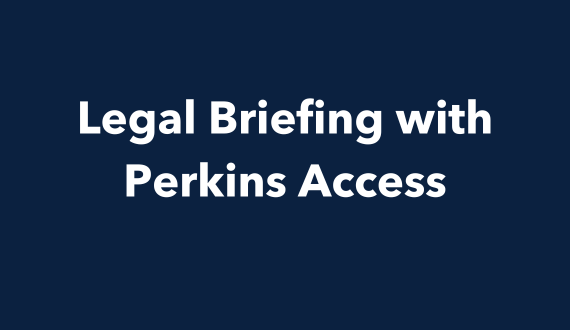Becoming an accessibility leader: A $10 billion opportunity for design and technology vendors
Share

Accessible design spending
More and more organizations today are prioritizing digital accessibility in their customer experiences, including their websites, apps, advertising, and customer research — and they’re investing serious money to support that goal.
Forrester estimates that in the coming years, anywhere from $10-$16 billion in design spending will shift to vendors and services companies committed to accessibility (Source: Forrester blogs, Digital Accessibility: How $10B In Design Spending Will Soon Be Up For Grabs Annually, June 2021). Why the shift? Disability inclusion has become a larger part of the national conversation, while accessibility lawsuits remain on the rise. Meanwhile, more organizations are catching on to the fact that accessibility is simply good business: nearly one in four people in the U.S. alone have one or more disabilities.
If you’re a vendor that provides design, web development, eCommerce technology, user testing, surveys or any other tools or services that support the digital customer experience, you can tap into this opportunity, and establish yourself as an accessibility leader. To do so, you’ll need a deep understanding of what accessibility is, and how you can weave it throughout your processes and procedures to deliver accessible tools and services to your clients.
So, where do you begin?
Assess your accessibility know-how
The first step is to determine the kind of skills and knowledge you’ll need to build — where you have expertise, and where you’re lacking. Are there particular departments and teams who are better versed in accessibility? Is your leadership on board and willing to invest in training and testing?
There are a variety of ways to increase your accessibility expertise, from hiring consultants, to hands-on training for your staff, to freely available resources like the W3C (The World Wide Web Consortium) accessibility standards. Regardless of how you proceed, it’s critical to remember that becoming knowledgeable in accessibility isn’t a “one and done” undertaking. Rather, it’s an ongoing process. Technical requirements and capabilities — including assistive technologies — are constantly evolving, while less-reliable accessibility tools like overlays continue to emerge as a marketed solution. To deliver the accessible experiences your clients want, you need to stay current, and have a solid understanding of what’s possible, what works, and what doesn’t.
Align with experts
You will also need to be able to assure your clients that you’ve done your due diligence. Digital experiences that don’t follow WCAG guidelines can lose deals and leave companies vulnerable to lawsuits and brand damage. As knowledgeable as you may be about accessibility, it’s essential to get outside validation. There are automated tools that can scan websites for accessibility issues, but they’re not 100% reliable. (Take a look at our guide, the 10 Accessibility Barriers an Automated Scanning Tool Can’t Find). Hiring a specialized accessibility consulting firm — like Perkins Access — to conduct audits and identify and remediate issues is the better route.
Engage with actual users
Don’t neglect the importance of user testing. Following WCAG design guidelines to the letter still can’t guarantee that the websites or tools you deliver will be accessible and user-friendly in the real world. Testing with real users with disabilities, using a range of assistive devices, is the best way to ensure that you’re delivering the most inclusive digital experiences possible, and win your clients’ trust.
By that same token, the testing process itself must be accessible. If you’re a vendor that provides user testing or other customer research services, you’ll need to ensure that any materials or technologies used in the process are accessible, that you address logistical issues like transportation and site accessibility, and that moderators and other staff have cultural training and experience working with people with disabilities.
Show your work
Finally, if you’re committed to accessibility, and have invested significant time and resources to back up that commitment, you need to let current and potential clients know. One way to do this is by crafting a Voluntary Product Accessibility Template or “VPAT” — a document that explains the accessibility of a product or service, such as your platform or software. Organizations in search of accessible design support will be looking for it. We can help you craft one.
When you invest in accessibility — both by building your own expertise and by engaging the expertise of others — you’ll open new doors to opportunity and help build a more inclusive world. Contact Perkins Access to discuss how our experts can help, with training, design reviews, accessibility audits, user testing and more.




